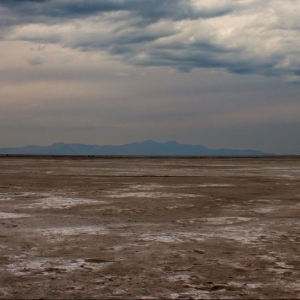Federal Water Tap, July 18: White House Considers Impacts of Breaching Snake River Dams
The Rundown
- The White House releases a pair of reports on Snake River hydropower and fisheries restoration.
- The Bureau of Reclamation revises the storage capacity of Lake Powell to account for storage loss due to sediment buildup.
- Federal nuclear regulators intend to issue a license for an interim nuclear waste storage facility in southeastern New Mexico.
And lastly, the White House science office asks for public input on the federal government’s PFAS research strategy.
“Business as usual will not restore the health and abundance of Pacific Northwest salmon. We need a durable, inclusive, and regionally-crafted long-term strategy for the management of the Columbia River Basin.” — Brenda Mallory, chair of the White House Council on Environmental Quality. The council released a pair of reports that assess the impacts of breaching dams on the lower Snake River.
By the Numbers
1 Million Acre-Feet: Loss of storage capacity in Lake Powell between 1986 and 2018 due to sediment buildup, according to the U.S. Geological Survey. That amounts to 4 percent of the reservoir’s designed capacity.
News Briefs
Less Storage in Lake Powell
Nature is chipping away at Lake Powell in more ways than one.
The decline in Colorado River flow is obvious and well known. The last blow, however, is happening below the surface.
On July 1, the Bureau of Reclamation began incorporating new measurements of Lake Powell’s storage capacity into its data reporting. The loss of capacity is due to sediment buildup in the reservoir.
The measurements show that the big reservoir has lost 4 percent of its capacity since 1986. In total, the reservoir has lost nearly 7 percent of its capacity since 1963, when it was completed. The rate of loss has remained steady.
The adjustment explains the discontinuity now visible in the Bureau of Reclamation’s Lake Powell storage data.
Studies and Reports
Snake River Dams
The White House chimed in on a highly fraught issue in the Pacific Northwest: whether to breach four dams on the lower Snake River.
The two reports released by the Council on Environmental Quality reinforced what salmon advocates have been saying: that breaching the dams will help the endangered fish survive. The reports also detail some of the costs of doing so.
One report, prepared by NOAA with input from state and tribal officials, is meant to inform actions taken by a regional task force to restore salmon and steelhead runs in the basin. It notes that breaching the four dams is “essential” for supporting the river’s fish stocks.
The other report is an analysis of how breaching the dams would affect the electric grid and the region’s clean energy goals. Prepared by the consulting firm Energy and Environmental Economics, the report found a range of impacts depending on the pace and extent that carbon-based energy is eliminated from the grid. The present value cost range to replace the dams’ services is between $11 billion and $19 billion.
Nuclear Waste Storage in New Mexico
The Nuclear Regulatory Agency intends to issue a license to Holtec International to build and operate a nuclear waste storage facility in southeastern New Mexico.
The facility is labeled “interim storage.” But there is no long-term storage facility in the country for nuclear waste from commercial power plants.
The license is for storing 5,000 metric tons of uranium for a period of 40 years, but those numbers will probably change. Holtec anticipates up to 19 expansion phases, each with the same capacity.
On water impacts: because there are no federally regulated waters or wetlands in the area, Holtec will not need Clean Water Act permits. The NRC and BLM concluded that any effects from construction and operations would be “small.”
On the Radar
PFAS Research Agenda
The White House is soliciting information it should consider when drafting a PFAS research strategy.
The Office of Science Technology and Policy has three major areas of focus for the strategy: removing the chemicals from the environment, destroying the chemicals, and developing safer alternatives.
Responses are due August 29 to JEEP@ostp.eop.gov using subject line “RFI Response: PFAS Strategic Plan.”
Federal Water Tap is a weekly digest spotting trends in U.S. government water policy. To get more water news, follow Circle of Blue on Twitter and sign up for our newsletter.
Brett writes about agriculture, energy, infrastructure, and the politics and economics of water in the United States. He also writes the Federal Water Tap, Circle of Blue’s weekly digest of U.S. government water news. He is the winner of two Society of Environmental Journalists reporting awards, one of the top honors in American environmental journalism: first place for explanatory reporting for a series on septic system pollution in the United States(2016) and third place for beat reporting in a small market (2014). He received the Sierra Club’s Distinguished Service Award in 2018. Brett lives in Seattle, where he hikes the mountains and bakes pies. Contact Brett Walton







Leave a Reply
Want to join the discussion?Feel free to contribute!